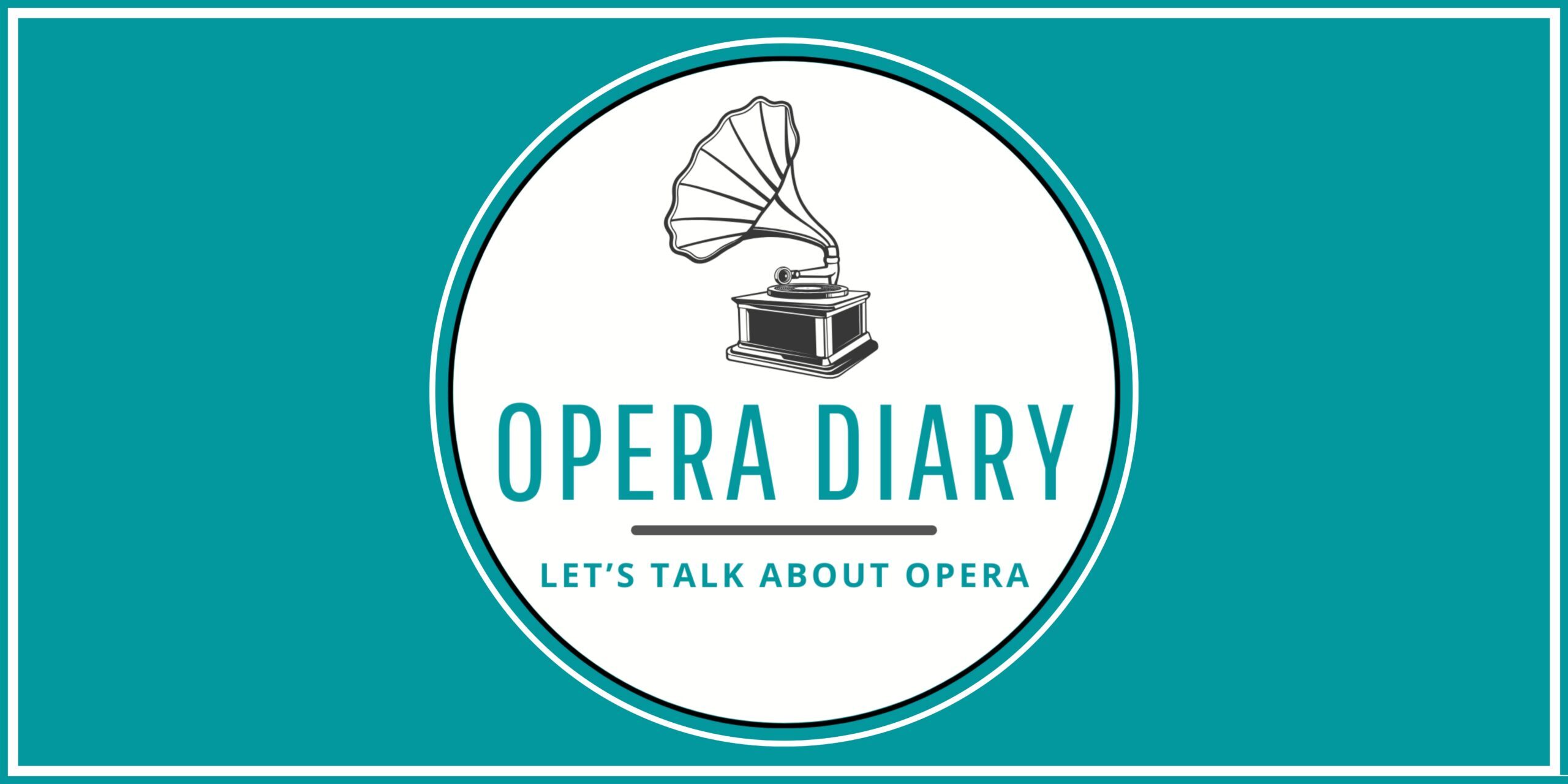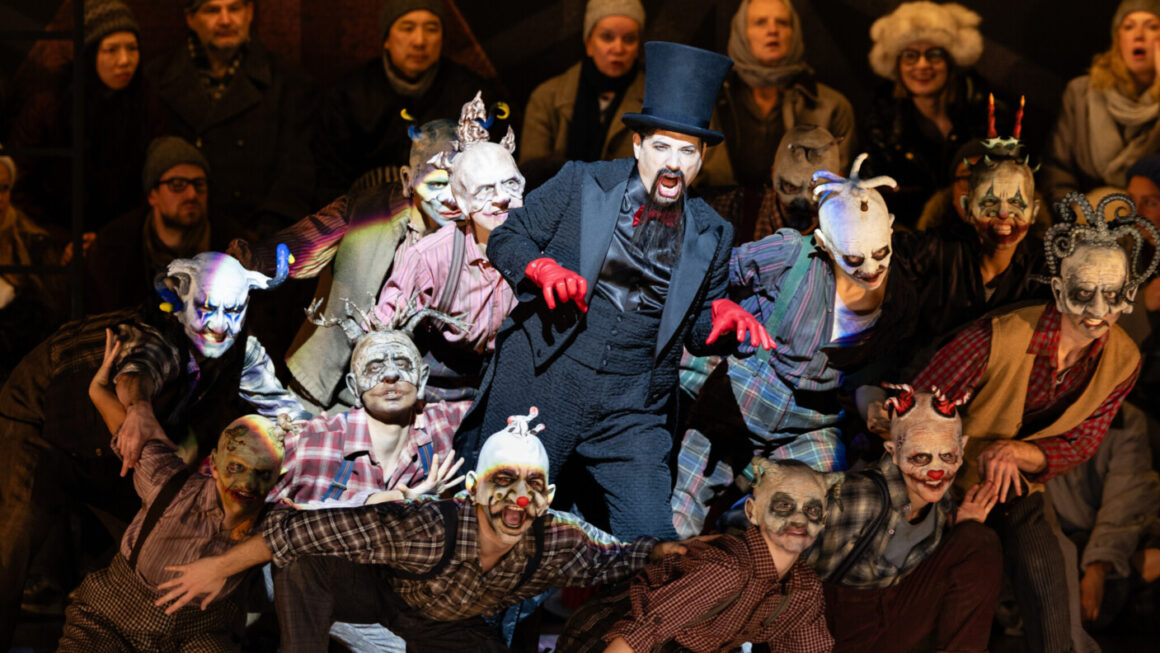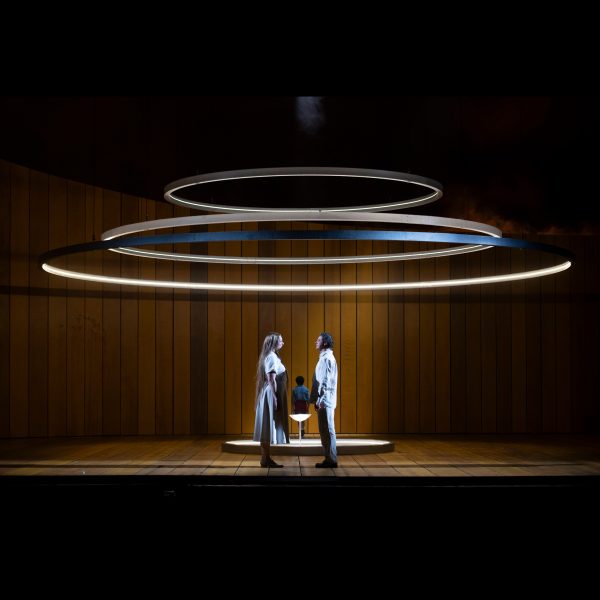Some weather websites predicted it would be der heißeste Tag des Jahres. We didn’t try to confirm how accurate that was… but instead saw for ourselves just how wrong the image of a cold and gloomy Bayreuth, firmly fixed in some people’s minds, really is, in every possible way.
Yes, the Grüner Hügel is indeed green. Very green. A little gem, a haven of peace, made up largely of a charming garden that surrounds what some see as a temple, and others as just another opera house, albeit one with arguably excessive prestige. Everyone must make up their own mind, and there’s no better way than to go there in person. What is undeniable, though, is the exceptional nature of this place, especially within a repertoire that stands apart in the history of opera. It’s hard to imagine what Wagnerism would have been without Bayreuth – and vice-versa. So it’s only natural to head to Bayreuth in the hope of experiencing something as extraordinary as the work that had captured our attention up to now.
Let’s just say straight away: our expectations were more than fulfilled.
A major undertaking, since Tristan und Isolde remains the pinnacle of a body of work unlike any other. Of course, some will rightly point to the Ring, but the comparison is rather misplaced. The latter is a vast, self-contained project: a long, mythical journey through worlds and spirits. Tristan, on the other hand, is four hours of blazing intensity, a distilled masterpiece crafted to express the most universal of feelings: love, in all its phases, culminating in the most paradoxical of circumstances – death. And not just any death: a Liebestod. It’s no idle philosophising to say that Tristan has its own unique dialectic. Has anyone ever truly died of love?

To approach such a subject, there’s no need to rely on overly realistic means: the theme is far too airy, too ethereal to be comfortably or meaningfully anchored in a reality that’s too concrete or close to everyday life. The risk of creating a dissonance that would undermine the theatrical experience is simply too great. So, creative freedom is essential – though it must still respect the many precise directions found in the libretto, written by Wagner himself. It’s with this in mind that Thorleifur Örn Arnarsson (supported by Vytautas Narnutas for the set design and Sascha Zauner for the lighting) shaped a vision that follows the Meister von Bayreuth’s guidance, while adding a few surprising touches that actually strengthen the connections between the different elements of the story. For instance, Tristan doesn’t die from the lingering effects of his wound by throwing himself onto Melot’s sword, but instead by drinking the Todestrank, just as Isolde does before her Liebestod. A death of love, then, and one more openly claimed than ever by two characters (or perhaps one: So starben wir, um ungetrennt, ewig einig, ohne End’, ohn’ Erwachen, ohn’ Erbangen, …) whose bond is undeniably fused, yet still marked by tensions rooted in the memories of their separate lives before they met. Hence the strange feeling of repeated attempts to come together and pull apart, a self-perpetuating rhythm throughout the first part of Act II, until they finally surrender to an unbreakable union.
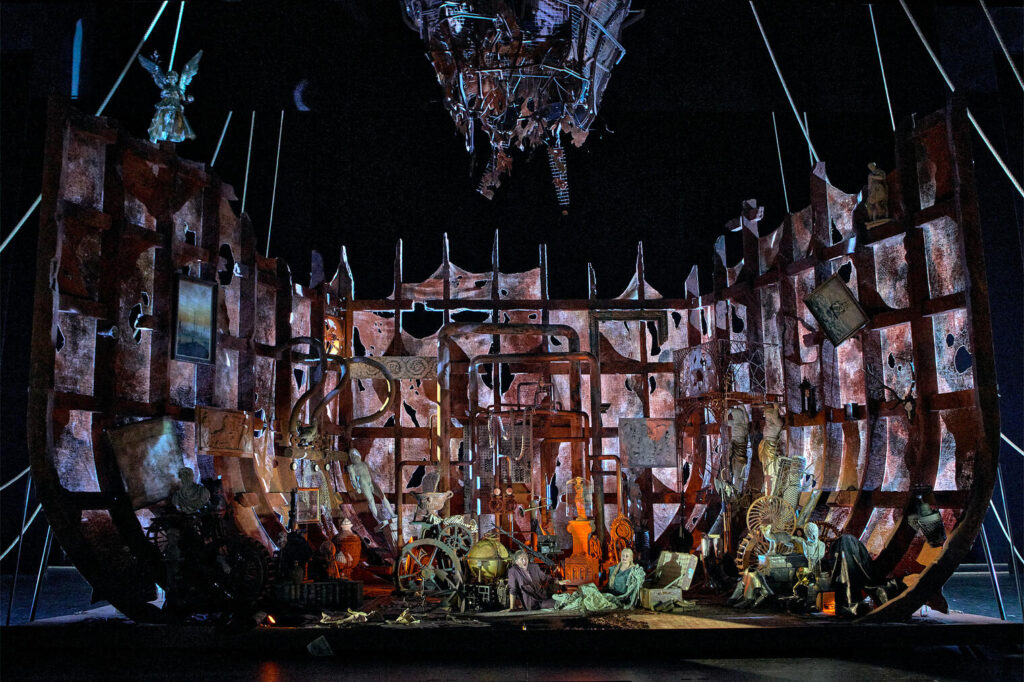
Act I opens with Isolde (Camilla Nylund) centre stage, wearing a fencing mask adorned with pearls and, most strikingly, a vast gown (costumes by Sibylle Wallum) made from fragments of letters she has written since meeting Tristan. Words like Tantris, Mark, Licht, Nacht, and many others appear: a mosaic of language forming the foundation of a memory steeped in pain and sorrow, resentment and bitterness, which will only fade (or at least soften) after the love potion is consumed. Camilla Nylund, commanding in the tradition of the great performers who have graced this stage before her, pays tribute to them with a performance of remarkable depth. She shapes an Isolde rich in tonal and emotional nuance, going far beyond a simple reading of the role. This is a true act of embodiment, a sculpting of psychological complexity. Her Isolde is in constant evolution throughout the opera, perfectly in tune with the eternal melody that runs through the work. Emotional landscapes shift, intentions emerge and dissolve, and through the versatility of her voice and presence, she makes the demands of the libretto and the vision of the staging entirely believable.
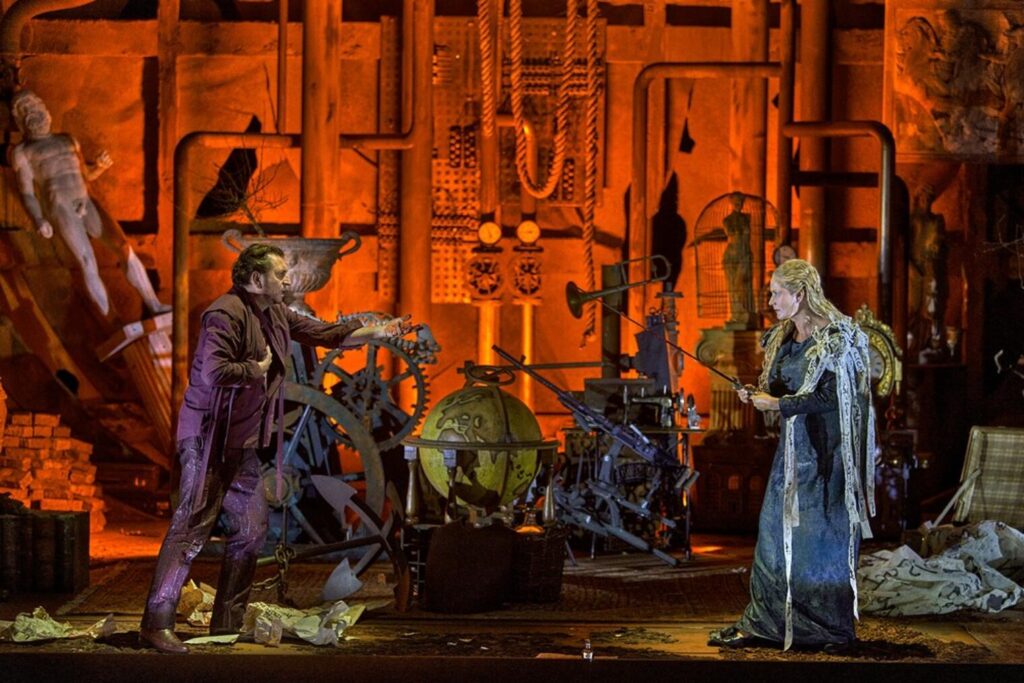
At her side, Andreas Schager burns with passion and intensity from beginning to end. The singer possesses an unwavering vocal and theatrical vehemence, with stamina that seems only to grow as the score becomes increasingly demanding. His ability to deliver an exceptional performance without faltering is a core part of his artistic arsenal. Such fervour in no way prevents him from bringing tenderness and a deeply lyrical sensitivity to the role. On the contrary: he actively contributes to the creation and prolongation of that sense of grace that carries us away. The many shades of emotion embodied by this more-than-accomplished Sängerschauspieler, especially in Act III, form a richly detailed watercolour, crafted with the finest of brushstrokes. Just witness the subtlety of his acting and the power of his voice between Lust ohne Massen, freudiges Rasen! and verflucht sei, furchtbarer Trank!: a vivid demonstration of the character’s profound complexity made strikingly tangible.

The other performances fully meet our expectations: Ekaterina Gubanova, a seasoned Brangäne, continues to hone her art of nuance over time, elevating her interpretation to stand among the most memorable portrayals in recent years. Günther Groissböck exudes grandeur and flair in a role perfectly suited to his formidable talents: a regal part for a performer of equal stature, despite a touch of affectation. Jordan Shanahan (that we had the chance to see in Jochanaan (Salome) and in Barak (die Frau ohne Schatten) in Berlin this year) brings to life a deeply human Kurwenal, his warm, enveloping voice blending seamlessly with that of Andreas Schager. The rest of the cast (Daniel Jenz (Narraboth (Salome) in September 2024 in Vienna), Lawson Anderson and Matthew Newlin) is an absolute delight to hear.
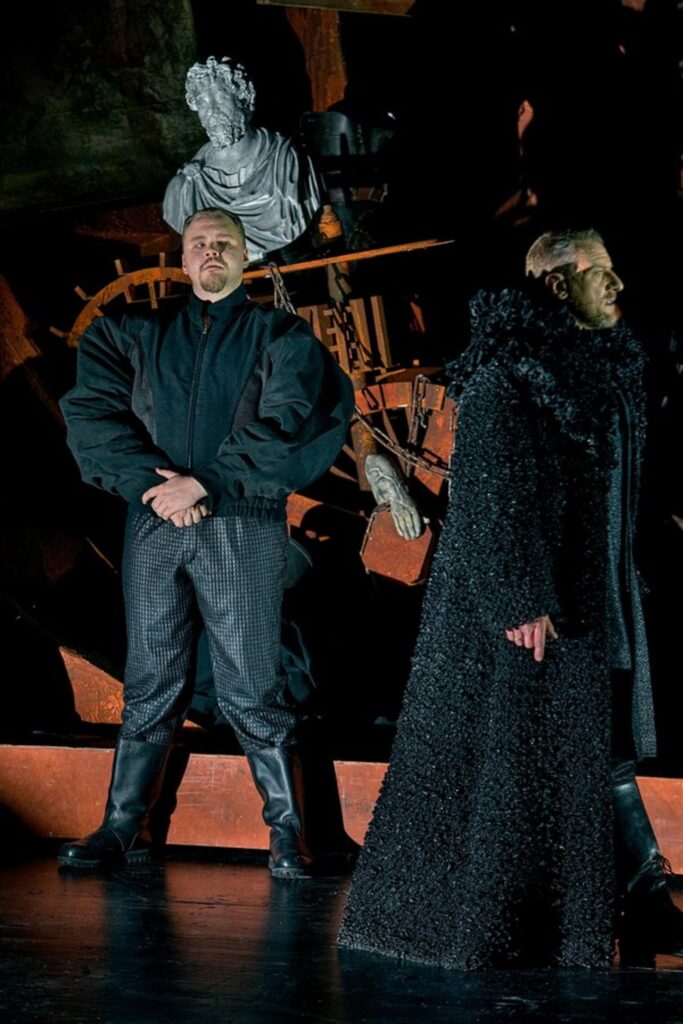
From the uniquely designed pit of the Festspielhaus emerge tender, caressing evocations under the precise yet eternally gentle baton of Semyon Bychkov. No brusqueness, no haste, just an unwavering attention to detail at every level, with leitmotive carefully etched to underscore the score’s intentions. It may strike the ear as overly refined at times, but what joy it is to grasp, note by note, what the composer once laid on paper, brought to life by the masterful artistry of an orchestra that becomes a co-narrator of this romantic epic.
The heat, then, was merely a foretaste, a decorative flourish in an experience that was nothing short of exhilarating. For those who have yet to find the opportunity, the desire, or the motivation to visit Bayreuth, let yourself be drawn in by the beauty of the place, its mythical aura, and above all, by the spellbinding music that continues to astonish and move lovers of opera everywhere.
:::::::::::::::::::::::::::::::::::::::::::::::::::::::::::::::::::::::::::::::::::::::::::::::::::::::::::::::::::::::
TRISTAN UND ISOLDE
Opera in three acts by Richard Wagner
Based on the novel Tristan (ca. 1210) by Gottfried von Straßburg
Première: Munich Hoftheater, 10 June 1865
Semyon Bychkov | Conductor · Thomas Eitler-de Lint | Choral Conducting · Thorleifur Örn Arnarsson | Director · Vytautas Narbutas | Stage design · Sibylle Wallum | Costumes · Andri Hardmeier | Dramaturgy · Sascha Zauner | Lighting
Cast: Andreas Schager | Tristan · Günther Groissböck | Marke · Camilla Nylund | Isolde · Jordan Shanahan | Kurwenal · Alexander Grassauer | Melot · Ekaterina Gubanova | Brangäne · Daniel Jenz | Ein Hirt · Lawson Anderson | Ein Steuermann · Matthew Newlin | Junger Seemann · Festspielorchester · Festspielchor · Credit photos: ©Bayreuther Festspiele/Enrico Nawrath
(For further informations) Link to the Bayreuther Festspiele: Tristan und Isolde (2025)
